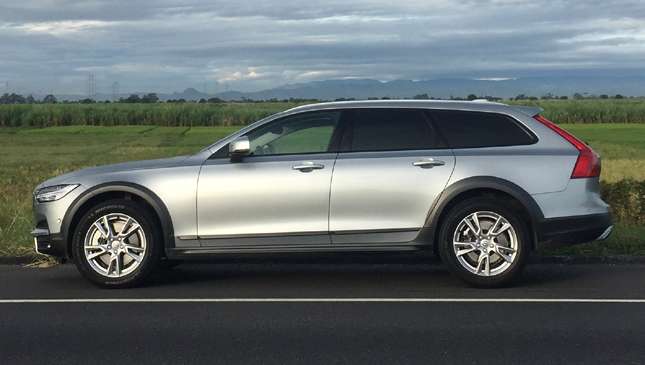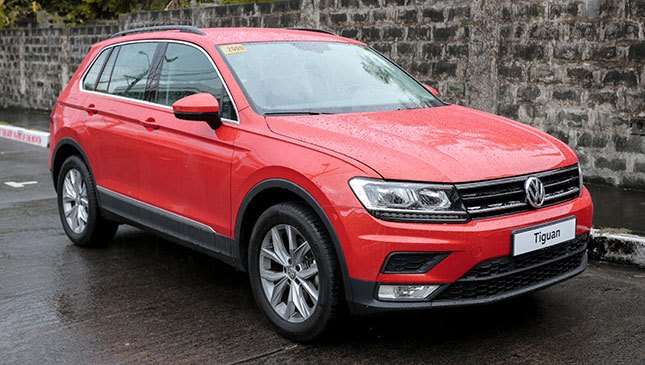
The Volkswagen Tiguan was bound to get the short end of the stick when it finally reached our market at the end of 2013. For one, it was an aging platform, which has been around since 2007. Second, it was sorely lacking in amenities—a factor that makes or breaks a deal these days, unfortunately.
So a lot rests on the all-new model. What does it bring to the table this time?
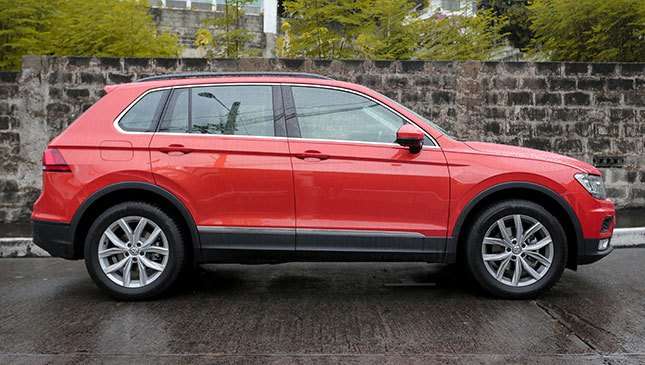
Styling
The second-generation Tiguan’s design is simpler, yet looks more athletic. The front end is visibly wider, emphasized by the grille and headlights with a unified look, along with the car’s increased width of 30mm (now 1,839mm wide). The Tiguan’s width is further underlined by grooves on the hood, directing the lines outward. Capping the front are two-point LED DRLs.
The car is also lower (by 33mm to 1,632mm) and longer (by 60mm to 4,486mm), giving it a more dynamic appearance. The pillars, for instance, are more slanted than the previous model. This results to better aerodynamic efficiency, aided by aero-friendly side mirrors.
A prominent design feature on the side is the heavily sculpted character line, creating a channel and a softer secondary character line in the process. These highlight the rear wheel arches and shoulders, and further stress the Tiguan’s width. It also draws your attention to the chiseled taillights—the character lines outlining the contour and the passage further aiding aerodynamics.
Giving the Tiguan a sport-ute look are unpainted lower portions. This Habanero Orange exterior, sadly, won’t be available.

Interior
The interior has likewise been redesigned, departing from the previous model’s bulky portions and rounded surfaces. It’s more fluid and more Germanic. There’s an unstated luxury combined with simplicity, which is usually the case with the Volkswagen Group. The multimedia display is also similar in features to the current lineup and is easy to search through.
The textured fabric seats are supportive, and the front seats are equipped with lumbar support. The increase in dimensions, better use of space, and leaner portions, meanwhile, give an airier feel to the cabin. There’s a 26mm increase in cabin length, giving rear occupants 29mm more legroom. As for trunk space, it can swallow 615L, 145L more than the old model. With the rear seats folded, total capacity is 1,655L.
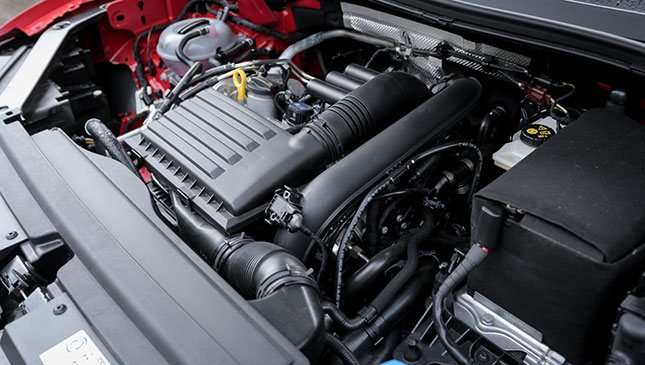
Engine performance
Propelling this Tiguan is the 1.4-liter turbopetrol engine, delivering 148hp and 250Nm. Throttle response is smooth and immediate. It’s mated to a six-speed DSG gearbox. And just like other Volkswagens equipped with DSG, just flick it down from Drive to activate Sport mode, and flick it again to revert to Drive. Simple. A downside is there are no paddle shifters.
In moderate to heavy city traffic, it yielded about 7 to 8km/L. Traffic conditions, however, make it difficult to get a proper reading. On SLEX cruising at about 80 to 90kph, I managed to get as much as 16.7km/L.

Ride and handling
Steering is light, responsive and precise. The ride straddles nicely between firm and supple—not too hard nor too soft. Such a balance makes it comfortable for your occupants, yet athletic when you ask more from the car.
Built on VW’s new MQB platform (the first SUV in the Volkswagen Group), it shaves off 50kg. You can feel the Tiguan is lighter on its feet.
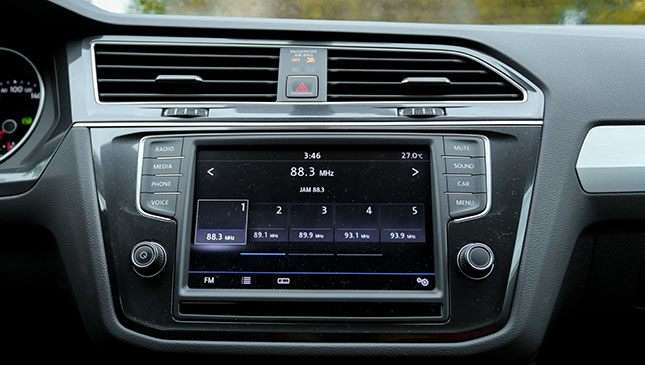
Extra features
Auto hold is a convenient feature that keeps the Tiguan at rest when your foot is off the brakes while the gear is in Drive in bumper-to-bumper traffic. Nudging the accelerator gets you going again. The Tiguan also has start/stop function, increasing fuel efficiency.
Verdict
The old Tiguan was compelling. It was wonderful behind the wheel, had good design (at the time it came out and lasting a couple of years), but that was it. It was simply lacking everywhere else. With the compact crossover segment so competitive, the Volkswagen’s less-is-more approach just wasn’t going to cut it.
Which is why we were looking forward to this new one. It’s a more exciting product—much sharper in every aspect and better equipped, making the price slightly easier to justify.
It’s hard not to compare it to the class favorites, the Subaru Forester and the Mazda CX-5. The top-of-the-line XT is still over P300,000 cheaper, and the outgoing Mazda CX-5 2.5 AWD is about P500,000 less. These two have earned their right to be compared to the Europeans. The Tiguan, on the other hand, offers an entry point into the German SUV cache.
SPECS: Volkswagen Tiguan 1.4 TSI DSG Comfortline
Engine: 1.4-liter DOHC I4
Transmission: 6-speed dual-clutch automatic
Power: 148hp @ 5,000rpm
Torque: 250Nm @ 3,500rpm
Drive: FWD
Seating: 5
Price: P2,259,000
Score: 18/20
Volkswagen Tiguan





























